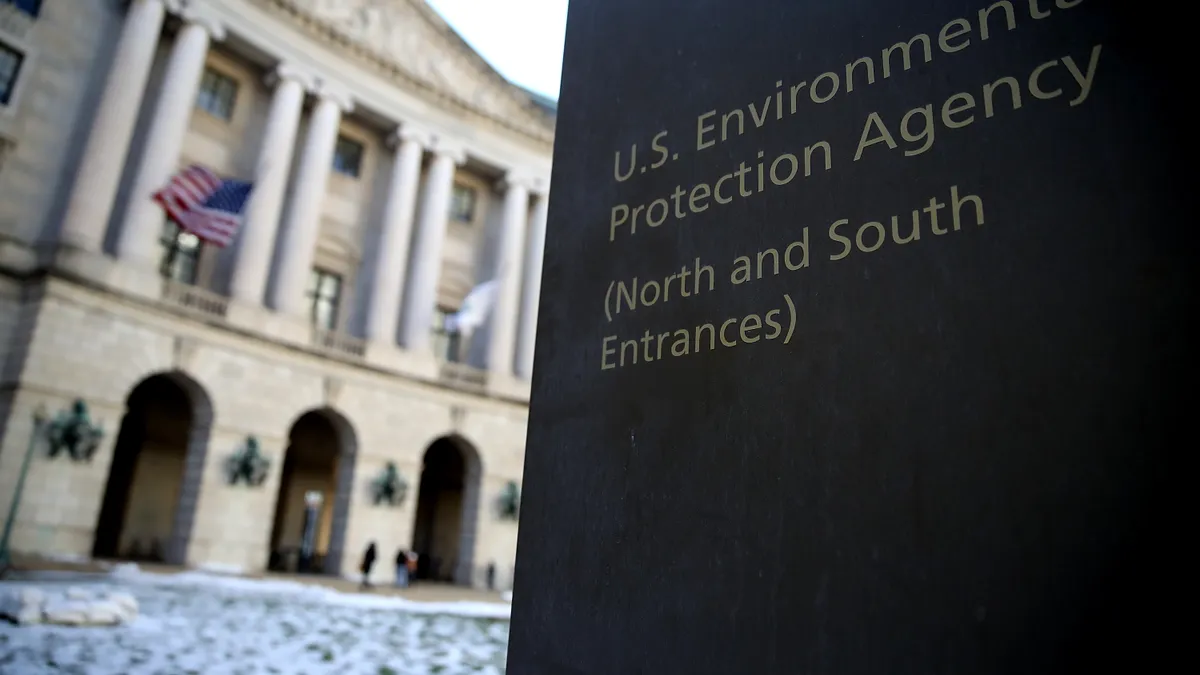Dive brief:
- The U.S. Environmental Protection Agency released new PFAS guidelines last week, which state that the agency would review new uses of “these forever chemicals” to ensure they’re not harmful to human health or the environment before the chemicals can be sold to consumers.
- The framework addresses new chemicals and new uses of per- and poly-fluoroalkyl substances, or PFAS, which have been linked to human health and environmental risks. The framework applies to all new notices of PFAS currently under review, as well as all notices the EPA may receive in the future.
- PFAS, colloquially called “forever chemicals” because of their ability to persist and build up in the environment, are often found in garments marketed as being stain-resistant and water-repellant. The announcement comes after several fashion and apparel companies began banning these chemicals from their textiles.
Dive insight:
Earlier this year, Dick’s Sporting Goods banned the use of PFAS in its branded textile products, following a similar move by outdoor retailer REI. PVH Corp. has also begun phasing out these chemicals and won’t produce new products with PFAS beginning in 2024.
VF Corp., which owns North Face, Vans and Timberland, also has plans to eliminate “unwanted chemicals,” which include PFAS, by 2025.
The newly announced framework furthers the EPA’s PFAS Strategic Roadmap, which was announced in 2021 and sets timelines on creating “meaningful steps to safeguard communities from PFAS contamination.”
The EPA already reviews new chemicals under the Toxic Substances Control Act of 1976, which includes new PFAS and new uses of PFAS, to assess the potential risks. It's also tasked with taking action to mitigate those risks before the chemicals enter the market.
New PFAS, however, present challenges in this evaluation process because there is often “insufficient information to quantify the risk they may pose and consequently to make effective decisions about how to regulate them,” per the release.
“For decades, PFAS have been released into the environment without the necessary measures in place to protect people’s health — but with this framework, EPA is working to reduce the risk posed by these persistent contaminants,” Michal Freedhoff, assistant administrator for the Office of Chemical Safety and Pollution Prevention, said in a news release on the framework. “EPA’s new framework will ensure that before any new PFAS enter the market, these chemicals are extensively evaluated and pose no risk to people’s health or the environment.”
A 2022 study from Toxic-Free Future found PFAS in jackets and textiles sold at various retailers. It found that 72% of items marketed as stain- or water-resistant contained PFAS, while none of the 13 items studied without stain or water resistance marketing appeared to contain PFAS. That report examined 10 retailers — Amazon, Bed Bath & Beyond, Costco, Dick’s Sporting Goods, Kohl’s, Macy’s, REI, Target, TJX, and Walmarunt — and found none of them were fully PFAS-free.











